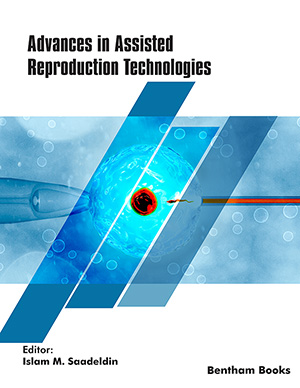Abstract
Background: Recently, different side effects have been observed after using antiviral drugs before activation of the immune system. Therefore, it is very important to use effective and non-invasive therapy with fewer side effects for infected virus treatment.
Methods: In this study, we designated a new device termed a Life Restoration Device (LRD). The main function of LRD is to generate electric frequencies with lower and safer potential. These frequencies can effectively destroy the biological elements in the viruses, such as nucleic acid materials and viral cell membranes, but not the cellular plasma membrane of the infected eukaryotic cells.
Results: A designated glass tube was prepared for this purpose. The infected cell culture was located in the cell culture media, and propagated viruses were poured into the glass tube. Additionally, two nickel-coated copper rods were inserted into both ends of the tube inside the cell culture media. Afterward, the two nickel-coated copper rods were connected to the LRD. Using LRD, lower potential electric frequencies were generated and applied for 30 min and 60 min time points. The treatment of the cell culture containing MERS-CoV and SARS-CoV-2 with LRD for 30 min significantly reduced the viral infectivity by 83% and 22%, respectively. After 60 min of treatment with LRD, the infectivity of MERS-CoV and SARS-CoV-2 viruses was reduced by 21% and 1%, respectively. Furthermore, HIV and HBV-infected blood showed a 95.5% and 100% viral inhibition rate after 2 h exposure to LRD. Additionally, based on the results of the electron microscopy of treated H5N1 virus and western blot analysis data of different types of viruses, the nucleic acid components of the treated viruses were reduced compared to the non-treated viruses. The low-power electric frequencies produced by LRD can reduce the fluidi ty and osmosis of the viral envelope but not the plasma membrane of the infected cells.
Conclusion: Treatment of different types of pathogenic viruses with electric stimulation produced by LRD is a new alternative to safe therapy but needs further investigations. The results of this study are important to develop an effective, safe, and alternative viral therapy.
Keywords: Life restoration device (LRD), codified ions, human viruses, MERS-CoV, SARs-Cov 2, HIV-1, HBV viral extermination.
[http://dx.doi.org/10.1016/j.coviro.2011.10.018] [PMID: 22440848]
[http://dx.doi.org/10.1007/s00705-018-3938-z] [PMID: 30039318]
[http://dx.doi.org/10.1186/s12879-015-0827-x] [PMID: 25879805]
[http://dx.doi.org/10.1002/9780470035399.ch5]
[PMID: 15160886]
[PMID: 17722309]
[http://dx.doi.org/10.2459/JCM.0000000000001068] [PMID: 32858623]
[http://dx.doi.org/10.1016/j.medmal.2019.10.004] [PMID: 31727466]
[http://dx.doi.org/10.1016/j.reprotox.2005.12.007] [PMID: 16480851]
[http://dx.doi.org/10.1053/spid.2002.29752] [PMID: 12118847]
[http://dx.doi.org/10.1086/382883] [PMID: 14986252]
[http://dx.doi.org/10.4065/mcp.2011.0309] [PMID: 21964179]
[http://dx.doi.org/10.1111/j.1423-0410.1993.tb02523.x] [PMID: 8384394]
[http://dx.doi.org/10.1016/S0166-0934(03)00098-3] [PMID: 12757921]
[http://dx.doi.org/10.1007/s00253-007-1214-3] [PMID: 17940763]
[http://dx.doi.org/10.1007/s00253-003-1410-8] [PMID: 12908087]
[http://dx.doi.org/10.1007/s00253-003-1225-7] [PMID: 12764558]
[http://dx.doi.org/10.1016/j.mehy.2020.110259]
[http://dx.doi.org/10.1128/jvi.51.3.595-603.1984] [PMID: 6088785]
[http://dx.doi.org/10.1007/978-1-4939-8678-1_4] [PMID: 30151569]
[http://dx.doi.org/10.1002/cpmc.105]
[http://dx.doi.org/10.1128/AAC.17.5.865] [PMID: 7396473]
[http://dx.doi.org/10.1016/0003-2697(81)90783-1] [PMID: 6172996]
[http://dx.doi.org/10.1038/s41581-020-00357-4] [PMID: 33077917]
[http://dx.doi.org/10.3389/fphys.2020.00890] [PMID: 32848845]
[http://dx.doi.org/10.1186/2191-0855-1-23] [PMID: 21906386]
[http://dx.doi.org/10.1016/0168-1656(91)90241-M] [PMID: 1367098]
[http://dx.doi.org/10.1016/j.bbrc.2005.02.007] [PMID: 15737612]
[http://dx.doi.org/10.1128/JVI.00194-08] [PMID: 18550658]
[http://dx.doi.org/10.15190/d.2013.3]
[http://dx.doi.org/10.1085/jgp.106.1.67] [PMID: 7494139]
[http://dx.doi.org/10.1007/BF02790451] [PMID: 6159095]
[http://dx.doi.org/10.1016/S0025-7125(05)70309-6] [PMID: 11190350]
[PMID: 12617510]
[http://dx.doi.org/10.1016/j.yexcr.2009.08.015] [PMID: 19720058]


























